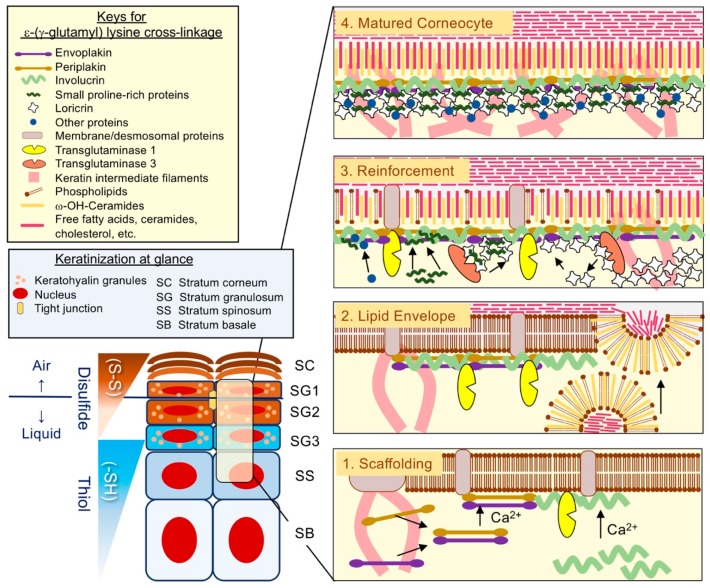Figure 2.
Keratinization at a glance—The epidermis encompasses a gradient of thiol (-SH) to adapt to xenobiotic insults encountered in terrestrial lifestyles. Loricrin (LOR) is a cysteine-rich cornified cell envelope (CE) protein that is critical in establishing the biochemical properties of the epidermis. The three-step model for CE assembly includes: 1. Stage one: scaffolding—Following the microenvironmental rise in Ca2+ concentration, involucrin (IVL), envoplakin, and periplakin precipitate at the entire inner surface of the cell membrane. Transglutaminase 1 (TG1) catalyzes ε-(γ-glutamyl) lysine cross-linkages and the monomolecular layer forms. 2. Stage two: lipid envelope—The limited membrane of lamellar granules (LG) delivers long-chain ω-hydroxyceramides. TG1 catalyzes ester cross-linkages between the lipid and IVL. This replaces the cell membrane and forms the corneocyte lipid envelope. Free fatty acids, cholesterol, or ceramides extrude from LGs and form characteristic intercellular lamellae. 3. Stage three: Reinforcement—LOR accumulates in the cytoplasm in the stratum granulosum (SG). Steinert proposed that LOR oligomerization with small proline-rich proteins (SPRRs) (catalyzed by transglutaminase 3) is a critical step to enable an easy translocation to the cell periphery. At the SG1, the only living layer facing an air–liquid interface, LOR undergoes extensive disulfide formation. It thus stabilizes corneocytes after the completion of interchain-intrachain ε-(γ-glutamyl) lysine cross-linkages.

